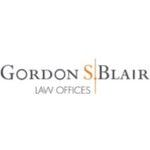-
How often is tax law amended and what is the process?
Very often. Changes are principally made using an annual Finance Act which is passed by the UK Parliament. In some years there may be more than one Finance Act. Some changes to tax law, generally procedural or administrative ones but sometimes substantive ones too, are enacted in secondary legislation in exercise of a power granted under primary legislation such as a Finance Act. Secondary legislation does not go through the same parliamentary process as primary legislation and it may be passed more quickly and at any time, with or without prior public consultation.
Draft clauses to be included in the next Finance Act are generally published several months before the Act is introduced to Parliament to allow for comments. It is not uncommon, however, for some changes to be implemented without prior consultation (particularly in the case of tax anti-avoidance).
In order to promote predictability and stability in the tax system, the current government has committed to one major fiscal event a year (an Autumn Budget) supplemented by a Spring Economic Statement. The next Autumn Budget will take place on 26 November 2025. The government has also signalled its direction of travel for the tax system with the publication of a Corporate Tax Roadmap in 2024 and a Transformation Roadmap in 2025, and has promised to take a flexible approach to technical consultation.
-
What are the principal administrative obligations of a taxpayer, i.e. regarding the filing of tax returns and the maintenance of records?
The principal tax procedural obligation in the UK is to file a tax return.
Companies are required to provide self-assessments of their corporate tax liability on delivering the return. Returns must normally be filed within 12 months of the end of the accounting period for which the return is made, and usually companies are required to keep records for at least six years from the end of the accounting period.
Most employees pay their income tax through the employer company’s payroll system and are therefore not required to submit an individual tax return. However, where an employee’s tax affairs are complicated in some way (for example, by having sources of income not taxed via their employer’s payroll), or where an individual is self-employed, that person is required to complete a tax return, usually annually, and to keep records for at least five years from 31 January following the tax year to which the tax return relates.
-
Who are the key tax authorities? How do they engage with taxpayers and how are tax issues resolved?
His Majesty’s Revenue and Customs (“HMRC” or “the Revenue”) is the main tax authority in the UK. HMRC engages with taxpayers usually by publishing guidance to help taxpayers understand and fulfil their obligations. There has been increased focus in recent years for HMRC to become more taxpayer-focused. Since 2009, the HMRC Charter has set out the standard of behaviour and values that HMRC aspires to when interacting with taxpayers (for example, to provide a helpful, efficient and effective service) and what it expects of taxpayers. The current version of the Charter was published in November 2020, with performance indicators updated annually.
Traditionally HMRC provided telephone helpline services to taxpayers but a major initiative today is to provide support services online as part of a more general move towards “digitalising” the process of reporting and collecting taxes. According to HMRC’s 2024/25 annual report, overall customer satisfaction across phone, webchat and digital services was 79.7% (a slight increase from the previous year). Digital services fared best with 82.9% of customers satisfied or very satisfied.
Although these are positive scores, there is certainly room for improvement. Whilst telephone helplines and online equivalents can deal with relatively simple queries, they are usually not suitable for dealing with complex queries. Accordingly, written correspondence remains highly relevant, but it is not unusual to face delays when awaiting a substantive written reply and HMRC is not legally obligated to respond to queries in all circumstances.
The resolution of disputes with HMRC, particularly if leading to litigation, tends to be a relatively lengthy process. In 2017, HMRC published a commentary on its litigation and settlement strategy (LSS), the aim behind which was to provide a mechanism for HMRC to settle disputes in a non-confrontational and collaborative way. However, in practice, HMRC can be litigious and uncompromising, particularly in cases where the revenue exposure is high. A large number of tax disputes still proceed all the way to courts and tribunals. This process has lengthened over recent years due to a backlog of cases exacerbated by the restrictions imposed during the covid pandemic.
-
Are tax disputes heard by a court, tribunal or body independent of the tax authority? How long do such proceedings generally take?
The first instance tribunal for most tax disputes (except for judicial review) is the Tax Chamber of the First-tier Tribunal (FTT). The Upper Tribunal (UT) commonly deals with appeals from the FTT only on matters of law. However, where the case is categorised as complex and where the UT and both parties consent, the UT may hear the case at first instance. A case requiring a hearing of less than a week will usually be heard by either tribunal within a year, although there are currently delays and it is not uncommon for hearings to take 18 months to be heard due to the backlog of cases following the pandemic (according to figures from the Ministry of Justice, there were 51,000 open cases at the FTT as at the end of March 2024, the latest date at which official statistics are available, up 2% from the previous year). As the FTT does not have judicial review powers, judicial review cases are heard in the Administrative Court or the UT.
Appeals from the UT (or High Court) are to the Court of Appeal, then to the Supreme Court. Permission to appeal is required and appeals can only be made on questions of law. Cases usually take around 18 months to complete in the Court of Appeal and two years in the Supreme Court. All tax tribunals and courts mentioned above are independent of HMRC.
-
What are the typical deadlines for the payment of taxes? Do special rules apply to disputed amounts of tax?
For companies with taxable profits of up to £1.5m, tax must be paid nine months and one day after the end of the accounting period. Where taxable profits exceed £1.5m but do not exceed £20m (“large companies”), companies must pay their tax in four equal instalments. If a company has a 12-month accounting period, instalments are due:
- 6 months and 13 days after the first day of the accounting period
- 3 months after the first instalment
- 3 months after the second instalment (14 days after the last day of the accounting period)
- 3 months and 14 days after the last day of the accounting period.
Where taxable profits exceed £20m (“very large companies”), companies must pay their tax in four equal instalments. If a company has a 12-month accounting period, instalments are due:
- 2 months and 13 days after the first day of the accounting period
- 3 months after the first instalment
- 3 months after the second instalment
- 3 months after the third instalment
This will be the 14th day of months 3, 6, 9 and 12 of the accounting period.
There are special rules where a company is part of a group of companies. In that situation, a company can be required to pay its tax in instalments even though it does not have taxable profits in the amounts stated above.
For individuals, the ultimate date for payment of self-assessed income tax is 31 January following the tax year ending in the previous April. There is also a system of advance payments, known as payments on account, which operates in some cases and requires a payment on 31 January in the tax year and 31 July after the end of the tax year before a tax return is filed. Each payment represents 50% of the previous year’s tax bill. Any remaining income tax liability for the tax year must be settled by 31 January following the end of the tax year.
It is possible on application to defer paying tax where the amount is in dispute. However, since 2014, in the case of tax avoidance schemes which are or should have been registered under the Disclosure of Tax Avoidance Schemes (DOTAS) rules, HMRC has the power in certain circumstances to require payment of disputed tax in advance of ultimate resolution of the dispute. HMRC exercises the power to require prior payment by issuing an “Accelerated Payment Notice” or “Partner Payment Notice” (APN or PPN) depending on whether the scheme in question involves a partnership. The taxpayer has 90 days to object in writing, following which HMRC will confirm, withdraw or amend the notice. There is no right of appeal against the confirmation of an APN or PPN.
Similarly, the Diverted Profits Tax (DPT) incorporates an advance payment procedure, against which there are only very limited appeal rights (although it should be noted that the DPT is to be replaced by a corporation tax charge on unassessed transfer pricing profits, likely from 2026).
-
Are tax authorities subject to a duty of confidentiality in respect of taxpayer data?
Section 18 of the Commissioners for Revenue and Customs Act 2005 (CRCA) imposes a duty on HMRC officials to ensure that taxpayer information is kept confidential. It is a criminal offence to contravene section 18 by disclosing information relating to a person whose identity is specified in the disclosure or can be deduced from it. The section 18 duty is not absolute and it does not apply to a disclosure which “is made for the purposes of a function of the Revenue and Customs and does not contravene any restriction imposed by the Commissioners.”
The judgment on this exception in R (Ingenious Media Holdings plc) v The Commissioners for HMRC [2016] UKSC 54 is of particular interest – the Supreme Court emphasised that HMRC’s duty of confidentiality is a fundamental duty owed to the taxpayer and held that the exception should be construed more narrowly than HMRC had contended.
HMRC’s duty of confidentiality is also one of the obligations in HMRC’s Charter of standards which HMRC aspires to when dealing with taxpayers.
-
Is this jurisdiction a signatory (or does it propose to become a signatory) to the Common Reporting Standard? Does it maintain (or intend to maintain) a public register of beneficial ownership?
The UK has committed to exchanging information under the Common Reporting Standard (CRS) based on the OECD Convention on Mutual Administrative Assistance in Tax Matters, and the CRS Multilateral Competent Authority Agreement (MCAA). Reporting runs annually from 1 January to 31 December and exchanges of information occur before the end of September of the following year, which is the deadline contained in the CRS MCAA. Financial institutions are legally bound to provide the required information to HMRC.
The government announced at Autumn Budget 2024 that it was considering the introduction of domestic reporting for the CRS. However, in light of issues raised during the consultation process, further stakeholder engagement is to be undertaken.
Information of beneficial ownership of companies is publicly available on the Companies House website.
-
What are the tests for determining residence of business entities (including transparent entities)?
There are two tests for determining whether a company is resident for tax purposes in the UK: (1) the incorporation test (the process is also referred to broadly as company registration), or (2) the central management and control test (broadly, the place where the management of the company exercise the highest form of control and direction over corporate affairs). Tests (1) and (2) are subject to a third test (3) under which a company that is resident in the UK under one or more of these tests, but which is treated as resident in another country and nonresident in the UK under that country’s double tax treaty with the UK, will not be treated as UK tax resident.
Regarding transparent entities, such as partnerships, one looks at the partner level. An individual’s residence status is determined by the application of a statutory residence test. UK-resident partners are liable to UK tax on their share of the worldwide profits of the partnership. However, where a partnership is managed and controlled abroad, UK resident partners may be entitled to claim relief from UK tax if they are eligible for the 4-year foreign income and gains (FIG) regime that came into force on 6 April 2025 (replacing the remittance basis). Non-UK-resident partners are only liable to tax on profits that arise in the UK and their share of partnership investment income to the extent that it arises in the UK.
-
Do tax authorities in this jurisdiction target cross border transactions within an international group? If so, how?
International tax planning and avoidance has an increasingly high public profile in the UK and has been a target for some time. HMRC’s Transfer Pricing and Diverted Profits Tax statistics indicate that 395 full-time equivalent staff worked on international issues involving multinationals during 2023/24 (a similar number to the previous year, but down from a high of 456 in 2019/20). However, this dip does not necessarily represent a lasting change in priorities, but more likely a generalised resourcing issue. Indeed, it was announced at Autumn Budget 2024 that the government would invest £1.4 billion in HMRC over the next five years to recruit an additional 5,000 compliance staff. HMRC also launched the Profit Diversion Compliance Facility (PDCF) in January 2019 in order to identify and write to specific multinationals that could be diverting profits away from the UK and has issued a total of 186 PDCF letters for the period to March 2024, generating a total of £830m additional revenue (from resolution proposals and changes in customer behaviour) in the process.
Further, to name just a few examples, the UK has had CFC rules since the 1980s (see Question 10, below), anti-arbitrage rules since 2005, a Diverted Profits Tax (DPT) since 2015 (to be replaced by a corporation tax charge on unassessed transfer pricing profits, likely from 2026), and a Digital Services Tax (DST) since 2020 (to be withdrawn if and when the OECD’s Pillar One model rules come into force – see Questions 13 and 14, below). There were also thin capitalization rules which today are subsumed within the transfer pricing rules (discussed at Question 11, below).
The UK is often an “early adopter” of international tax developments, for instance, it has been a vocal supporter of the OECD’s Base Erosion and Profit Shifting (BEPS) Project since its inception and has actively implemented its recommendations (in particular, the “Pillar Two” or global minimum tax rules, discussed at Question 14, below).
-
Is there a controlled foreign corporation (CFC) regime or equivalent?
Yes, there is a CFC regime.
The UK CFC regime is based on rules designed to prevent diversion of UK profits to low tax territories and is in line with the OECD’s recommendations in the BEPS Action 3 report. Where UK profits are diverted to a CFC, an attribution of profits of the CFC are apportioned to the UK corporate in proportion to their interest in the CFC (but note that an attribution is only required where the UK corporate holds at least a 25% interest in the CFC). There are a number of exemptions to reflect the fact that the majority of CFCs are established for genuine commercial reasons.
-
Is there a transfer pricing regime? Is there a "thin capitalization" regime? Is there a "safe harbour" or is it possible to obtain an advance pricing agreement?
Yes, there is a transfer pricing (TP) regime, and it is possible to obtain an advance pricing agreement (APA).
The UK TP regime is contained in Parts 4 and 5 of the Taxation (International and Other Provisions) Act (TIOPA) 2010. The UK TP regime must be considered in light of the Diverted Profits Tax (DPT) rules, which were introduced by the Finance Act 2015 (although note the DPT is to be replaced by a corporation tax charge on unassessed transfer pricing profits, likely from 2026).
The UK does not have any specific safe harbour regime (e.g. in relation to the amount of debt or interest deductions), but subject to certain limited exceptions, small and medium companies (no more than 250 staff and either an annual turnover of less than €50 million or a balance sheet total of less than €43 million) are exempt from the UK TP regime. Note, however, the UK government is consulting on changes to the UK TP regime, including removing the exemption for medium-sized businesses, designating current thresholds in sterling rather than euros and introducing a requirement for multinationals to report information on cross-border related party transactions.
There is also an APA programme through which unilateral, bilateral and multilateral APAs can be obtained (although HMRC’s preference is for bilateral and multilateral APAs). The process by which such an agreement can be obtained is detailed in Statement of Practice 2/2010 (as updated in HMRC’s International Manual at INTM422010). HMRC will determine the taxpayer’s Diverted Profits Tax position before agreeing to an APA.
The Finance Act 2004 abolished the separate thin capitalization requirements that had existed previously and subsumed them within the general and broadly drafted TP rules, based on the arms’ length principle, which today are found in TIOPA 2010. Accordingly, whether a company is considered to be thinly capitalized would need to be considered on a fact-specific, case-by-case basis.
-
Is there a general anti-avoidance rule (GAAR) and, if so, how is it enforced by tax authorities (e.g. in negotiations, litigation)?
A GAAR in relation to the main direct taxes (listed below) was introduced in the UK in 2013 and is targeted at abusive tax avoidance schemes. To determine whether a scheme should be counteracted, the question is whether there are tax advantages arising from tax arrangements that are abusive. Tax arrangements exist where, having regard to all the circumstances, it would be reasonable to conclude that the obtaining of a tax advantage was the main purpose, or one of the main purposes, of the arrangements. Tax arrangements are abusive where entering into the tax arrangements, or carrying them out, cannot reasonably be regarded as a reasonable course of action in relation to the relevant tax provisions, having regard to all the circumstances. This is termed the “double reasonableness” test. The burden of proof is on HMRC to show that the arrangements are abusive.
Although the GAAR has applied to the whole of the UK since 2013, Scotland introduced its own GAAR from 2015 in relation to land and buildings transaction tax and landfill tax. From 2018 Wales introduced a GAAR in relation to land transaction tax and landfill disposals tax. These devolved GAARs are similar but not identical to the UK-wide GAAR and they operate only in relation to the taxes which have been devolved to the national administrations. Therefore, the devolved GAARs do not operate UK-wide. Accordingly, the UK has more than one GAAR but it is the UK-wide GAAR introduced in 2013 which applies to the widest range of taxes across all territories of the UK. It currently applies to income tax, capital gains tax, corporation tax, petroleum revenue tax, diverted profits tax, inheritance tax, stamp duty land tax, the annual tax on enveloped dwellings, the apprenticeship levy and national insurance. It does not, however, apply to value added tax (VAT).
Subsequent Finance Acts have introduced measures to bolster the GAAR, including the introduction of penalties of up to 60% of the counteracted tax, allowing HMRC to issue a protective GAAR notice against taxpayers during investigations, and ensuring that the GAAR can be applied to partners or partnerships that enter into abusive arrangements.
It is HMRC’s intention that the GAAR be applied initially by taxpayers themselves, through their self-assessment or in their accounts, adjusting any tax advantage on a just and reasonable basis. However, HMRC also has powers of counteraction and matters may therefore proceed to litigation to be decided by the courts.
HMRC has had some success in invoking the GAAR to counteract tax advantages from abusive arrangements. At the time of writing (in autumn 2025) the GAAR Advisory Panel (part of the GAAR operating process) has issued 29 opinions which provide to HMRC (ahead of making any counteraction notice) an independent view of tax arrangements that are referred to them, and which can subsequently be used together with HMRC’s GAAR guidance to help taxpayers recognise abusive tax arrangements. In 2022 the GAAR Advisory Panel issued its first opinion in favour of the taxpayer; all previous opinions had been in favour of HMRC. The GAAR has not yet been litigated before a tribunal or court.
HMRC has issued very extensive guidance materials indicating how the GAAR would operate in a wide range of contexts, but whilst large businesses may be able to discuss cases with their HMRC customer compliance manager (CCM), there is no formal clearance procedure in respect of the GAAR. Accordingly, a taxpayer who is unsure whether an arrangement might be considered abusive may consider making make a “white space disclosure” on their tax return in order to protect against a discovery assessment after the enquiry period.
-
Is there a digital services tax? If so, is there an intention to withdraw or amend it once a multilateral solution is in place?
The UK currently has a digital services tax (DST), introduced effective 1 April 2020, on the revenue of large digital businesses with over £500m worldwide revenue from social media, search engines or online marketplaces where over £25m revenue derives from the UK, irrespective of how they monetise their platforms. The tax is 2% on the revenue from UK users and raised £358m from large digital businesses in its first year, which was more than anticipated and more than most such taxpayers had been paying in UK corporation tax, rising to £900m by 2024/25.
If and when the OECD’s Pillar One proposals are implemented, all unilateral DSTs – including the UK DST – will be withdrawn. Assuming international consensus is reached (which is looking increasingly unlikely), the UK is expected to adopt the OECD’s Pillar One model rules.
-
Have any of the OECD BEPS recommendations, including the BEPS 2.0 two-pillar approach been implemented or are any planned to be implemented?
The UK has introduced legislation to implement most of the OECD BEPS recommendations set out in the 2015 final reports, including legislation and guidance on hybrids (Action 2) and interest deductibility (Action 4). UK transfer pricing rules contain an express reference to the OECD Transfer Pricing Guidelines for construction purposes (the current version being the 2022 OECD Transfer Pricing Guidelines).
On tax treaty abuse (Action 6) the UK has adopted the principal purpose test and has replaced the place of effective management (POEM) tie-breaker with a clause requiring agreement between the two states under the mutual agreement procedure.
The UK has introduced country-by-country reporting and has with effect from April 2023 required large businesses (those with global revenues of €750 million or more) to implement the additional recommendations of the BEPS Action 13 Final Report to prepare a master file and local file. Plans to introduce a “summary audit trail” (SAT) requirement, where businesses must complete a questionnaire detailing the main actions they have taken in preparing the local file, have been delayed.
The Multilateral Convention or Multilateral Instrument (MLI, Action 15) to implement tax treaty related measures entered into force on 1 October 2018 and began to have effect in UK tax treaties from 1 January 2019. Nearly all of the UK’s tax treaties are marked as “covered tax agreements”. The UK has also committed to apply the mandatory arbitration (Action 14) provisions in Part VI of the MLI.
The UK has not adopted the recommendations regarding the design of CFC rules (Action 3) on the basis that its domestic legislation already prevents taxpayers from inappropriately shifting income into foreign subsidiaries.
The UK did not initially adopt the changes to the definition of permanent establishment recommended in the Action 7 report. However, in 2019 the new anti-fragmentation rule concerning the various specific activity exemptions in Article 5(4) of the OECD Model Tax Convention was introduced in the UK. Further, following a consultation in 2023, HMRC published draft legislation in April 2025 to align the UK permanent establishment rules more closely with the OECD rules, for example in relation to dependent agent permanent establishments. The government intends to introduce legislation in the Finance Bill 2025-26 with earliest implementation in January 2026.
In July 2023 the UK government enacted legislation to implement Pillar Two in the UK, which applies to large multinational enterprises for accounting periods beginning on or after 31 December 2023. The legislation introduces a new top-up tax on UK parent members when a subsidiary is located outside of the UK and the group’s profits arising in that jurisdiction are taxed at a rate below the agreed minimum rate of 15% (the “multinational top-up tax” (MTT)) and a “qualifying domestic minimum top-up tax” (QDMTT or DTT) which puts a 15% effective tax rate floor under UK members of large groups, wherever headquartered. The legislation includes an election to apply a transitional safe harbour based on the country-by-country reporting rules for accounting periods commencing on or before 31 December 2026 and ending on or before 30 June 2028, as previously announced by the OECD. The government enacted further legislation in March 2025 to introduce the Pillar Two Undertaxed Profits Rule (UTPR) for accounting periods beginning on or after 31 December 2024. The UTPR brings a share of top-up taxes that are not paid in another jurisdiction into charge in the UK.
-
How has the OECD BEPS program impacted tax policies?
The UK has been an active and vocal supporter of the BEPS project since its inception and has actively implemented the BEPS recommendations, frequently as an early adopter. Accordingly, BEPS has had an appreciable impact on policy in the UK, albeit that, as explained above, the UK government’s view has been that some of the UK’s rules were already consistent with BEPS outcomes.
-
Does the tax system broadly follow the OECD Model i.e. does it have taxation of: a) business profits, b) employment income and pensions, c) VAT (or other indirect tax), d) savings income and royalties, e) income from land, f) capital gains, g) stamp and/or capital duties? If so, what are the current rates and how are they applied?
The UK does broadly follow the OECD model of taxation. The current rates are as follows:
a) Business profits
Corporation tax is at a main flat rate of 25% of profits. This rate was increased from 19% with effect from 1 April 2023, with the 19% rate continuing to apply to companies with profits below £50,000. Companies with profits between £50,000 and £250,000 are taxed at the main rate but may claim marginal relief. As discussed at Question 14 above, the UK has implemented the OECD’s Pillar Two proposals introducing a global minimum corporate tax rate of 15%.
Companies involved in the oil and gas sector in the UK or UK continental shelf pay corporation tax at up to 40%. In addition, in response to soaring energy prices for consumers and the extraordinary profits of businesses in the sector, the UK government has imposed a temporary Energy Profits Levy (EPL) of 38% (having previously been 25% until 31 December 2022 and 35% from then until 31 October 2024) taking the combined rate of tax on profits to 78%. Until 31 October 2024, the charge to the EPL was reduced by an investment allowance at a rate of 29% of investment expenditure (80% prior to 1 January 2023). Although this has now been abolished, an investment allowance for expenditure on upstream decarbonization remains available (at the rate of 66% from 1 November 2024, reduced from 80%). The EPL is intended to remain until 31 March 2030 (previously 2028), though it may be ended earlier if oil and gas prices return to more historically normal levels prior to that time. During its first two years the EPL raised £6.2bn (£2.6bn in 2022/23, rising to £3.6bn in 2023/24).
Diverted Profits Tax is charged generally at 31% on profits diverted from the UK, but the rate is 55% where the diverted profits arise from oil rights or extraction activities, and 33% where the diverted profits are profits subject to the banking surcharge. The main Diverted Profits Tax rate of 31% increased on 1 April 2023 from 25% to mirror the 6% increase in corporation tax detailed above.
Digital Services Tax is charged at 2% on revenues of search engines, social media platforms and online marketplaces which derive value from UK users. The UK government has announced this will be repealed if and when the OECD Pillar One reforms are implemented.
b) Employment income and pensions
Personal income (including employment income) and pensions are taxed on a graduated basis – each band of
income is taxed at a different rate:
- Personal allowance up to £12,570 – 0%
- Basic rate between £12,571 to £50,270 – 20%
- Higher rate between £50,271 to £125,140 – 40%
- Additional rate over £125,140 – 45%
Scotland has some devolved tax powers and the power to partially set income tax rates. Scotland’s income tax rates differ from the rest of the UK (although the personal allowance is the same). In particular, Scotland has six tax bands rather than three, ranging from a starter rate of 19% (£12,571 – £ 15,397) up to a top rate of 48% (over £125,140). Wales also has devolved powers but for the 2024/25 tax year the rates in Wales are the same as in the rest of the UK (excluding Scotland).
When an individual taxpayer has income of over £100,000, they lose their personal allowance at a rate of £1 for every £2 of income over £100,000. Accordingly, the personal allowance is lost in its entirety when an individual’s income is £125,140 or above.
c) VAT (or other indirect tax)
VAT is set at a flat rate of 20% of the consideration for goods or services, although some goods are subject to a reduced rate of 5% (such as children’s car seats) or a zero rate (such as children’s clothes).
d) Savings income and royalties
The amount of tax paid on savings income will depend on a person’s total taxable income. Firstly, if the person has not claimed the full personal allowance from other income, they can use the remainder of the allowance to earn interest tax-free. Secondly, if their other income is less than £17,570, they may also claim up to £5,000 of interest tax-free. Thirdly, they may be eligible for up to £1,000 of interest tax-free depending on which income tax band they are in.
e) Income from land
Income from land will generally be added to an individual’s overall taxable income in a given year and is therefore taxed on the same basis as income from other sources (see (b) above).
f) Capital gains
There is an annual tax-free allowance for capital gains of £3,000 for individuals and £1,500 for trustees. As a result of changes to the rates of capital gains tax announced in the Spring and Autumn Budgets 2024, higher and additional rate taxpayers now pay 24% on gains from residential property and other chargeable assets (excluding carried interest). Basic rate taxpayers generally pay at a lower rate (of 18%), but this depends on the size of the capital gain and their taxable income.
Carried interest is currently subject to capital gains tax at a flat rate of 32% (prior to 6 April 2025, an 18% rate applied to basic rate taxpayers and a 28% rate to higher and additional rate taxpayers). From 6 April 2026, carried interest will be taxed as trading profits under the income tax framework at a rate of up to 45% (but with a 72.5% multiplier applying to qualifying carried interest, reducing the effective tax rate to around 34%).
g) Stamp and/or capital duties
Stamp Duty Land Tax (“SDLT”) is a tax on the purchase of land situated in England or Northern Ireland. The charge is graduated in a number of “slices”. Currently, the first £125,000 of the purchase price of a residential property is tax-free, with higher slices of the purchase price taxed at rates of 2%, 5%, 10% and 12%.
For non-residential properties, the first £150,000 paid is tax-free, with higher slices of the purchase price taxed at 2% and 5%.
Where a purchaser (and anyone they are purchasing with) is buying their first home and they intend to occupy it as their main residence, and the purchase price is £500,000 or less, then the first £300,000 is tax-free and the remainder is taxed at 5%.
Higher rates of SDLT apply to purchases of additional residential properties (such as second homes and buy-to-let properties), to non-UK resident buyers and to purchases by certain corporate bodies or non-natural persons.
Wales and Scotland each have their own land transaction tax for properties situated in their territory. The rules are similar to SDLT.
Stamp Duty is a tax on the transfer of shares where a stock transfer form or other instrument of transfer is used. The rate is generally 0.5% of the consideration paid. Stamp Duty Reserve Tax is a tax that in practice is usually only paid on the electronic transfer of shares, where no stock transfer form or instrument of transfer is used. The rate is 0.5% of the consideration paid.
-
Is business tax levied on, broadly, the revenue profits of a business computed in accordance with accounting principles?
Yes. Corporation tax and income tax of the self-employed and partnerships in the UK are a tax on profits.
The starting point in the computation of taxable profits is the figure provided by commercial accounting. This figure is then adjusted as required or authorised by law. Taxable profits of a company include the money the company makes from doing business (trading profits) and investments and selling assets for more than they cost (chargeable gains). Taxable profits of the self-employed include trading profits and other income, with chargeable gains taxed separately from income profits. Partnerships are often transparent and therefore generally one looks at the partner level to determine the charge to business tax.
-
Are common business vehicles such as companies, partnerships and trusts recognised as taxable entities or are they tax transparent?
In the UK there may be a difference between the recognition of an entity for tax purposes and the incidence of tax liability. A company is a legal entity and pays tax at the corporate level. A general partnership or limited partnership (except where created under Scottish law) is not a legal entity distinct from its partners but profits are computed at partnership level and consequent tax is levied at partner level on the individual partner’s share of the profit. A limited liability partnership (LLP) is a legal entity for company law purposes but, provided it is trading, is treated like a general partnership for tax purposes, i.e. it is treated as transparent. The flexibility of having tax transparency at the level of the vehicle whilst being able to access the benefits of incorporation has made the LLP a popular vehicle for businesses since its introduction in 2000.
Trusts can attract income tax, capital gains tax or inheritance tax. The tax payable and the person responsible for ensuring the tax is paid largely depend upon the type of trust.
-
Is liability to business taxation based on tax residence or registration? If so, what are the tests?
The UK follows the principle of territoriality: it taxes the worldwide profits of its residents and the UK profits of non-residents. As indicated in Question 8 above, there are two tests for determining whether a company is resident for tax purposes in the UK: (1) the incorporation test (the process is also referred to broadly as company registration), or (2) the central management and control test. Tests (1) and (2) are subject to a third test (3) under which a company that is resident in the UK under one or more of these tests, but which is treated as resident in another country and non-resident in the UK under that country’s double tax treaty with the UK, will not be treated as UK tax resident.
-
Are there any favourable taxation regimes for particular areas (e.g. enterprise zones) or sectors (e.g. financial services)?
Yes. Established in 2012, enterprise zones are designated areas across England that provide tax breaks and government support. Examples of the benefits that may be available to businesses located in an enterprise zone are 100% enhanced capital allowances (tax deductions for qualifying capital expenditure), government support to ensure superfast broadband throughout the zone and up to 100% business rate (a charge on most non-domestic properties) discounts worth up to £275,000 per business over a five-year period. The aims of the regime are to attract foreign investment into the country and to deliver long-term, sustainable growth across England. Generally, these zones have designated time frames within which businesses must establish their operations to qualify for the offered benefits.
In 2021 the UK introduced a series of “Freeports”, which were selected following an open bidding process. Businesses within a Freeport are entitled to special tax incentives to encourage investment and growth such as enhanced capital allowances on plant and machinery, and relief from stamp duty and employer national insurance contributions for eligible employees. The following year, the government committed to launch various “Investment Zones” across the UK in which “special tax sites” are designated. Targeting growth in sectors such as digital technologies and life sciences, these “high-potential knowledge-intensive growth clusters” offer a package of tax benefits similar to those offered by Freeports. Given the similarities of the two programmes, the government announced in June 2025 that it would bring together Freeports and Investment Zones as “Industrial Strategy Zones” as part of its Industrial Strategy, with the aim of driving investment in high growth sectors.
There are other parts of the UK tax code which may be regarded as “favourable” taxation regimes. For example, the Enterprise Investment Scheme, Seed Enterprise Investment Scheme and rules relating to Social Investment Tax Relief and Venture Capital Trusts are all designed to help small or medium-sized companies and social enterprises grow by attracting investment which they may otherwise struggle to obtain. The rules offer tax reliefs to individuals who buy and hold new shares, bonds or assets for a specific period of time. There are also special rules relating to the Patent Box and research & development tax relief, as discussed at Question 21, below.
Although not a “favourable” taxation regime, regulated banking entities in the UK are currently subject to measures which were introduced in response to the financial crisis: the bank levy, bank surcharge and loss restriction rules. These are in addition to corporation tax, though in 2023 the bank surcharge was reduced by 5% (from 8% to 3%) to coincide with the (6%) increase in the general rate of corporation tax. Furthermore, the Code of Practice on Taxation for Banks was introduced in 2009 as a voluntary undertaking by participants to maintain good standards of governance and behaviour in their approach to taxation. The effect of these rules is that a large part of the financial services sector suffers increased taxation.
-
Are there any special tax regimes for intellectual property, such as patent box?
Yes. The Patent Box regime enables a UK company to claim a lower rate of corporation tax – at 10% rather than the current main rate of 25% – in relation to “relevant IP profits”. To qualify as such, profits must derive from five broad activities: (1) the sale of patented products; (2) licence fees and royalties from rights the company grants to others; (3) income from the sale of the patent; (4) infringement income; and (5) damages, insurance or other compensation. The Patent Box regime was designed to attract companies with intellectual property overseas to choose the UK as a jurisdiction in which to develop the asset. Following OECD concerns that the Patent Box regime was open to abuse, the UK government amended the regime in 2016 in accordance with the “modified nexus approach” recommended by the OECD (BEPS Action 5), so that the claimant company (or another group company) must have undertaken qualifying development work on the IP right in order to benefit from the lower tax rate.
In addition to the Patent Box, the UK also gives research and development (R&D) tax relief for projects that advance overall capability or knowledge in a technological or scientific area (this is not just increasing the company’s knowledge). From 1 April 2024, two R&D tax reliefs are available (although a company cannot claim both in respect of the same expenditure). Firstly, the merged scheme R&D expenditure credit (RDEC) provides a 20% “above-the-line” (taxable) credit. For companies paying the main rate of corporation tax, the cash benefit is 15%; for those paying the small profits rate, the cash benefit is 16.2%.
Secondly, under the enhanced R&D intensive support scheme (ERIS), loss-making R&D-intensive small or medium-sized enterprises (SMEs – i.e. enterprises with up to 500 employees and either up to €100m turnover or up to €86m balance sheet) can either claim an enhanced deduction of 186% of qualifying expenditure in calculating their adjusted trading loss or claim a payable tax credit worth up to 14.5% of the surrenderable loss. A SME is “R&D-intensive” if its R&D expenditure is at least 30% of its total expenditure.
-
Is fiscal consolidation permitted? Are groups of companies recognised for tax purposes and, if so, are there any jurisdictional limitations on what can constitute a tax group? Is there a group contribution system or can losses otherwise be relieved across group companies?
The UK does not provide for fiscal consolidation of, or fiscal unity within, company groups. Each company within a corporate group must pay corporation tax on its profits. However, group relief, which allows certain types of loss of one group member to be surrendered to another, is available. Trading losses, non-trading loan relationship deficits and excess capital allowances may be surrendered and do not need to be used first by the loss-making company. However, other current-year losses (such as property business losses and qualifying charitable donations) can only be surrendered as group relief to the extent that they exceed the surrendering company’s other profits in the accounting period.
Certain types of carried-forward losses, for example trading losses and non-trading loan relationship deficits, may be surrendered to other group members provided that various conditions are satisfied, including that the surrendering company cannot use the losses itself. However, the corporate loss restriction (CLR) imposes a 50% restriction on the amount of profits over £5m against which most carried-forward losses may be relieved.
It is possible for certain non-UK resident companies to be members of a group for group relief purposes. However, the surrender of cross-border losses is permitted only in limited circumstances.
-
Are there any withholding taxes?
There is no withholding tax (WHT) on dividends paid by UK companies, save for a 20% WHT applied to certain dividends paid in respect of income profits and capital gains of a UK real estate investment trust (REIT). Yearly interest, royalties and certain annual payments are subject to a 20% WHT unless the rate is reduced under a double tax treaty or an exemption applies. Income tax and national insurance owed by employees are usually deducted by employers from salaries and accounted for directly to HMRC under the Pay As You Earn (PAYE) system. A similar withholding system operates under the Construction Industry Scheme where contractors use self-employed sub-contractors.
-
Are there any environmental taxes payable by businesses?
Yes. The UK imposes a Climate Change Levy (CCL) on industrial, commercial and agricultural businesses and public services on electricity, gas and solid fuels. Businesses can get a substantial reduction on the rate of CCL if the business has entered into a climate change agreement with the Environment Agency.
There are three further environmental taxes of note:
- A tax on top of normal landfill fees if the business disposes of waste using landfill sites. The standard rate of tax is £126.15 per tonne (landfill tax).
- A tax on sand, gravel and rock that has been dug from the ground, dredged from the sea in UK waters or imported. The current rate of tax is £2.08 per tonne (aggregates levy).
- A tax which applies to plastic packaging manufactured in or imported into the UK where the plastic used in its manufacture is less than 30% recycled. The rate of the tax is £223.69 per metric tonne of plastic packaging (plastic packaging tax).
From 1 January 2027, the UK Carbon Border Adjustment Mechanism (CBAM) will impose a levy on importers of certain carbon-intensive goods from countries with a lower or no carbon price.
-
Is dividend income received from resident and/or non-resident companies taxable?
The UK has a general exemption system of dividend taxation, whereby UK and non-UK sourced dividends and other distributions received by a UK company or a UK permanent establishment are subject to corporation tax unless the distribution falls within a number of exemptions. The exemptions are drafted broadly such that their overall effect is to exempt all dividends from corporation tax unless they fall within certain anti-avoidance provisions called Targeted Anti-Avoidance Rules (TAARs).
TAARs include rules that, for example, prevent the artificial transfer of value out of a company resulting from either an intra-group asset transfer otherwise than at market value or the payment of a dividend out of artificial profits.
-
What are the advantages and disadvantages offered by your jurisdiction to an international group seeking to relocate activities?
Much would depend on the nature and scope of the group’s activities. However, some of the key advantages of the UK include:
- Its well-developed, sophisticated financial infrastructure and high level of connectivity with the rest of the world, including a comprehensive tax treaty network.
- A skilled workforce and talent pool, with competitive labour costs.
- The UK’s courts are experienced at dealing with international disputes and are often flexible in procedure and relatively cost-effective. They are a forum of choice for the resolution of international disputes.
- HMRC always scores well in comparison exercises with other national tax authorities and is recognised as honest and sophisticated.
- The UK has the lowest corporation tax rate in the G7 (25% main rate), with access to tax incentives such as R&D tax relief and the Patent Box.
- While no longer a member of the EU, the UK’s trade deal with the bloc provides for no tariffs or quotas on trade in goods if rules of origin are met, and only contains some general rules on trade in financial services.
Some key disadvantages of the UK are attributable to Brexit and include:
- The loss of membership to the single market and customs union (and the consequential loss of market access in financial services through “passporting”).
- The inability to rely on the EU Arbitration Convention and the Directive on Tax Dispute Resolution Mechanisms to resolve disputes where double taxation occurs between companies of different Member States.
- The inability to rely on the Parent-Subsidiary Directive, the Mergers Directive, and the Interest and Royalties Directive. Consequently, UK companies receiving dividends, interest and royalties from EU companies will have to rely on double tax treaties to eliminate (if possible, or reduce) withholding taxes on such distributions. Depending on the terms of the tax treaty, companies might incur additional costs when distributing profits from certain EU Member States and might have to consider restructuring to distribute dividends more efficiently.
United Kingdom: Tax
This country-specific Q&A provides an overview of Tax laws and regulations applicable in United Kingdom.
-
How often is tax law amended and what is the process?
-
What are the principal administrative obligations of a taxpayer, i.e. regarding the filing of tax returns and the maintenance of records?
-
Who are the key tax authorities? How do they engage with taxpayers and how are tax issues resolved?
-
Are tax disputes heard by a court, tribunal or body independent of the tax authority? How long do such proceedings generally take?
-
What are the typical deadlines for the payment of taxes? Do special rules apply to disputed amounts of tax?
-
Are tax authorities subject to a duty of confidentiality in respect of taxpayer data?
-
Is this jurisdiction a signatory (or does it propose to become a signatory) to the Common Reporting Standard? Does it maintain (or intend to maintain) a public register of beneficial ownership?
-
What are the tests for determining residence of business entities (including transparent entities)?
-
Do tax authorities in this jurisdiction target cross border transactions within an international group? If so, how?
-
Is there a controlled foreign corporation (CFC) regime or equivalent?
-
Is there a transfer pricing regime? Is there a "thin capitalization" regime? Is there a "safe harbour" or is it possible to obtain an advance pricing agreement?
-
Is there a general anti-avoidance rule (GAAR) and, if so, how is it enforced by tax authorities (e.g. in negotiations, litigation)?
-
Is there a digital services tax? If so, is there an intention to withdraw or amend it once a multilateral solution is in place?
-
Have any of the OECD BEPS recommendations, including the BEPS 2.0 two-pillar approach been implemented or are any planned to be implemented?
-
How has the OECD BEPS program impacted tax policies?
-
Does the tax system broadly follow the OECD Model i.e. does it have taxation of: a) business profits, b) employment income and pensions, c) VAT (or other indirect tax), d) savings income and royalties, e) income from land, f) capital gains, g) stamp and/or capital duties? If so, what are the current rates and how are they applied?
-
Is business tax levied on, broadly, the revenue profits of a business computed in accordance with accounting principles?
-
Are common business vehicles such as companies, partnerships and trusts recognised as taxable entities or are they tax transparent?
-
Is liability to business taxation based on tax residence or registration? If so, what are the tests?
-
Are there any favourable taxation regimes for particular areas (e.g. enterprise zones) or sectors (e.g. financial services)?
-
Are there any special tax regimes for intellectual property, such as patent box?
-
Is fiscal consolidation permitted? Are groups of companies recognised for tax purposes and, if so, are there any jurisdictional limitations on what can constitute a tax group? Is there a group contribution system or can losses otherwise be relieved across group companies?
-
Are there any withholding taxes?
-
Are there any environmental taxes payable by businesses?
-
Is dividend income received from resident and/or non-resident companies taxable?
-
What are the advantages and disadvantages offered by your jurisdiction to an international group seeking to relocate activities?





























